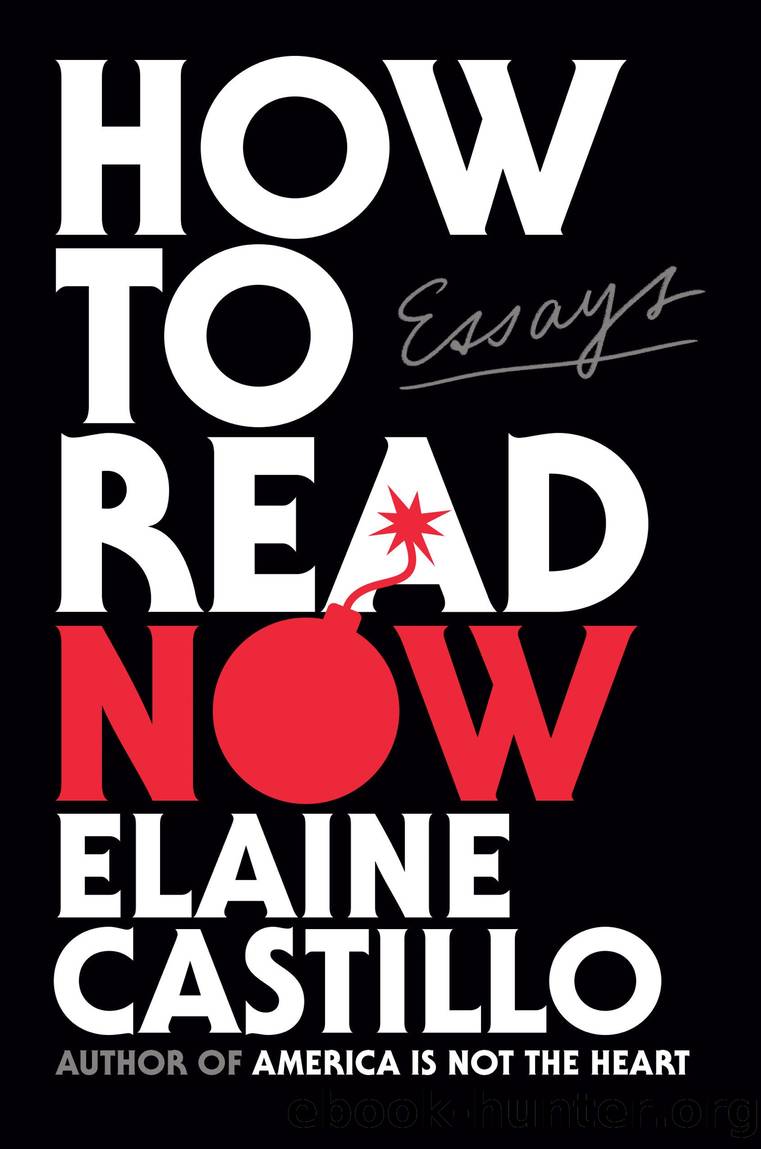How to Read Now by Elaine Castillo

Author:Elaine Castillo [Castillo, Elaine]
Language: eng
Format: epub
Publisher: Penguin Publishing Group
Published: 2022-07-26T00:00:00+00:00
For young America it had everything: nature as subject matter, a system of symbolism, a thematics of the search for self-valorization and validationâabove all, the opportunity to conquer fear imaginatively and to quiet deep insecurities. It offered platforms for moralizing and fabulation, and for the imaginative entertainment of violence, sublime incredibility, and terrorâand terrorâs most significant, overweening ingredient: darkness, with all the connotative value it awakened.
In her review of Mailerâs book, Didion describes the âWesternâ sections of the novel as âa fatalistic drift, a tension, an overwhelming and passive rush toward the inevitable. . . . The women in the âWesternâ book are surprised by very little. They do not on the whole believe that events can be influenced. A kind of desolate wind seems to blow through the lives of these women. . . . The wind seems to blow away memory, balance.â
This passive, barren portrait of white womenâs interiority in the West is not just textbook Didion but textbook Americana: itâs a deliberate characterization of white colonial femininity as grimly but unoperatically tragic; helpless and blameless. (Sometimes, the defense of Didionâs writing from critique takes a page from this proto-girlboss handbook, i.e., that to criticize her is misogynist; defending white heroines is, after all, a totemic American pastime.) The women are fragile but hard; too scattered and distracted to ever be anything as overt as a heroine or a villain; always imperiled but somehow never quite vanquishedâmost of all, they are ethically neutral objects through which history happens, not decisive actors of history themselves. Their presence in the West is not an active project of occupation, but an inevitability; nobodyâs fault.
It cannot furthermore escape anyoneâs notice that many of the articles praising Didionâs work take pains to mention, quasi-fetishistically, the authorâs physical buildâoften emphasizing the combination (not quite contrast) of her appealingly laconic, âmasculineâ prose with her sylphlike thinness: again and again we are encouraged to appraise her apparent fragility as well as be impressed by her severe, distilled purity; the pale pared-down sliver of her. That casual fatphobia should also have its comfortable nook in literary criticism, as in all reaches of society, comes as no surprise; writers like Sabina Strings, in her book Fearing the Black Body: The Racial Origins of Fat Phobia, help coax out the psychosocial regimes of control, refinement, and respectability that govern the glorification of thin wealthy white femininity, in contrast to the supposedly overflowing appetitesâand ungovernable bodiesâof poor women, immigrant women, women of color (not even always women; think of the racist and fatphobic experiences recounted by the late great aesthete and indisputable fashion polymath André Leon Talley). Strings writes that at the end of the nineteenth century, âit was incumbent upon Anglo-Saxon women, then, to serve as the flag bearers of a new standard of beauty, one rooted, âthanks to our benign religion and better civilization,â in morality, health and racial pride. . . . The new standard of beauty . . . that of the tall, slender, Anglo-Saxon Protestant woman, did arrive.
Download
This site does not store any files on its server. We only index and link to content provided by other sites. Please contact the content providers to delete copyright contents if any and email us, we'll remove relevant links or contents immediately.
| Booksellers & Bookselling | General |
| History of Books |
4 3 2 1: A Novel by Paul Auster(12288)
The handmaid's tale by Margaret Atwood(7681)
Giovanni's Room by James Baldwin(7195)
Asking the Right Questions: A Guide to Critical Thinking by M. Neil Browne & Stuart M. Keeley(5649)
Big Magic: Creative Living Beyond Fear by Elizabeth Gilbert(5615)
Ego Is the Enemy by Ryan Holiday(5295)
The Body: A Guide for Occupants by Bill Bryson(4975)
On Writing A Memoir of the Craft by Stephen King(4863)
Ken Follett - World without end by Ken Follett(4646)
Adulting by Kelly Williams Brown(4488)
Bluets by Maggie Nelson(4476)
Eat That Frog! by Brian Tracy(4436)
Guilty Pleasures by Laurell K Hamilton(4362)
The Poetry of Pablo Neruda by Pablo Neruda(4041)
Alive: The Story of the Andes Survivors by Piers Paul Read(3970)
White Noise - A Novel by Don DeLillo(3954)
Fingerprints of the Gods by Graham Hancock(3943)
The Book of Joy by Dalai Lama(3903)
The Bookshop by Penelope Fitzgerald(3777)
